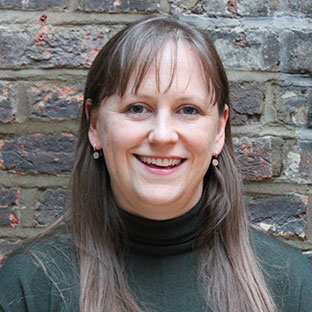Spoiler alert. We don’t exactly know. We will be hosting a conversation find out more, and it will be framed something like this. There is a tension in the evidence that for the majority of us, increased autonomy correlates with increased job satisfaction and well-being. The more we have control over our own work, the happier we are in our work.
RSA Academies is committed to the importance of creativity in teaching and learning. Our schools have committed to develop confident and creative pupils through an education rich in the arts, design, creative and cultural activities. For pupils to develop their creativity, teachers need to be able to teach in ways that encourage the innovation, independence and risk taking which are fundamental to being creative. There is an argument then that teachers should be creative themselves, to be able to innovate, to have some autonomy in their classrooms and to take some risks in how they teach.
There is however, a widely reported problem with the workload in teaching, which in turn correlates to the challenge of retaining experienced teaching staff as well as the recently qualified.
So far we can conclude that the way teacher creativity interacts with job satisfaction and retention is unlikely to be straightforward. One could argue that giving teachers ready to use materials and specific instructions about how to use them would reduce the job of lesson planning. Not exactly creative, and perhaps not exactly motivating for most teachers, but given the pressures on teachers is this sometimes a helpful shortcut?
So the question is where and how do you give autonomy to maximise teacher motivation and retention, whilst at the same time improving outcomes for pupils. Here are three factors worth considering.
Is context everything?
In this conversation there is merit in considering the problem at an individual level; that if for that teacher and that topic off the shelf materials represent the best way of teaching and learning then it has value and we must understand it in context. Dylan Wiliam said that in education, “what works?” is rarely the right question, because everything works somewhere, and nothing works everywhere, and is why in education, the right question is, “under what conditions does this work?”. The take-away here is that the conversation needs to understand the context in which successful approaches work, and then we need to work to understand how successes might be applicable in other contexts and therefore replicable elsewhere.
What about quality?
Given the reams of terrible teaching resources that are easily available on line and the question of how you might quality assure off the shelf resources, here is an intriguing idea to broaden the conversation.
“It is not for government to produce curriculum resources for schools; Policy Exchange believes that confidence is likely to be higher in the quality of the materials designed by high-status institutions such as museums, the Royal Societies, high-performing multi-academy trusts or respected academic publishers.”
In quoting this I don’t mean so much the reference to Royal Societies (though do take a look at the RSA Pupil Design Awards if you are minded whilst we are at this juncture), but instead to highlight the potential offered by a greater involvement of arts and cultural organisations to this end. To name one institution to make the point, the British Museum’s offer to schools (though I have not used it personally) appears well worth considering, being based on their unique collection of objects, it is well conceived, cross curricular and age appropriate.
Is it a power play?
The Behavioural Insights Team recently published A Practical Guide for Parents, Teachers and School Leaders and notes teacher motivation as an important predictor of student success, and demonstrates that motivation tends to decline over time. It suggests that, “one way that school leaders can motivate their teachers is to give them more control over what they do”. This might suggest that autonomy is achieved through the choice of being able to use pre-prepared materials vs having to create your own, in short having the power to decide where and when to use your creativity.
It could be argued that the relationship between a happy teacher and their student is key to success rather than the method of teaching. In reality, of course you could see it being a balance of both, but where does the balance sit?
These three factors are part of our thinking so far in how teacher creativity and autonomy relates to motivation and retention, we are also planning to ask:
- In what ways have teachers exercised their creativity in their teaching; what have schools done to encourage this and what are the benefits and possible negative consequences?
- What is the evidence of impact on teachers’ workload, job satisfaction, well-being and possibly retention?
- In what circumstances is teacher autonomy desirable and when is detailed prescription more appropriate?
- What are the implications for how schools should develop teachers’ creativity whilst maintaining high expectations of pupil outcomes across the school?
In the spirit of how we co-design and develop projects working with teachers and pupils, what do you think? What other questions should we be asking? Who should be answering them? Would you like to be part of a bigger conversation?
Georgina Chatfield is Programme Manager for RSA Academies
@georginachat
Related articles
-
How young people are shaping social change despite Covid-19 challenges
Aidan Daly
Despite the pandemic, school pupils are demonstrating creative confidence and a commitment to making their communities a better place.
-
Artsfest 2019 – on tour!
Georgina Chatfield
Artsfest is an celebration of arts and creativity organised by RSA Academies. Georgina Chatfield explains what this year's Artsfest achieved.
-
What role can schools play in developing young people’s social agency?
Hannah Breeze
"Social action as a means of developing and expressing character might just be the antidote to the ‘education by numbers’ system", argues Hannah Breeze from the RSA Academies team.




Join the discussion
Comments
Please login to post a comment or reply
Don't have an account? Click here to register.
Hi Georgina, sorry to just catch up on your blog and I too agree that we need a roundtable. I'm on an OECD panel for HE on creative and critical thinking in HE
(See: https://www.thersa.org/discover/publications-and-articles/rsa-blogs/2016/07/creative-critical-or-both-an-emerging-view-of-higher-education)
...and teach teachers creativity-based enterprise education here in Wales as part of our new 'successful futures curriculum' which calls for creative enterprising contributors to society.
The blog below offers some insights, as we are working at an EU level on this one.
https://entreassess.com/2018/03/15/popping-up-a-shop/
I'd love to join your discussions if possible?
Thanks for your comment Andrew, and for sharing your blogs. We'll be in touch and we can explore where there's common interests. Thanks again.
Creativity in teaching.
I regularly receive my RSA Newsletter regularly and never have I found a subject more dear to my heart than your article on creativity in education, thanks Georgina. I’ve been a D&T and Maths teacher in a Comprehensive and a teacher trainer at Exeter Uni.
I detect a little confusion over ‘creativity’ being instilled in the pupils and ‘creativity’ being used by the teachers when carrying out their work. Both, to my mind, are essential.
The former has been well documented as a ‘good thing’, the ability to find another way of doing things is what moves the world along both commercially and culturally. Although I have found that creativity is one of the most inherited abilities that a person can possess, watch 6 year olds playing with a pile of Lego pieces and you will be able to tell which have a natural creativity.
The latter, creativity being used by teachers to assist the learning process is an area which greatly needs improving. A teacher who does not reflect on his or her work and their effectiveness and therefore creatively adapt their next lessons to improve or experiment, is a dull teacher. There may be some excellent off-the-shelf material available but it is unlikely to suit all pupils and all teachers’ styles without some creative adaptation. The quality of the beef at the butchers may be excellent, but it is the chef who creates the meal.
I am a great advocate for Project work in all subjects. Give the pupils a few weeks to achieve a real-life aim in History, Maths, Geography, French, etc as well as the more obvious Art and D&T and both teacher and pupil will have to employ a great deal of flexibility and creativity along the way.
Good teaching requires hard work, reflection and adaptation.
I do hope that the conversation continues.
Hi Nigel, thank you very much for contributing a comment here. Appreciate your thoughts and very much enjoyed your metaphor. We will report back further ideas from others on this subject in a few months. Thanks again.
Hi Georgina, you might like to have a look at my blog at www.frankmckone2.blogspot.com for my collection Theatre Reviews and Drama Education. Go to https://frankmckone2.blogspot.com.au/search?q=Drama+Education for articles, paricularly 2017: Drama Education 2 - Drama Teaching Processes
and 2018: Drama Education Principles - Platform Paper No 54.
We are hopefully getting our RSA ANZ Canberra together this year, and I am keen to work on student agency in their learning and teacher creativity and innovation as an essential component in the process.
Good to read your thoughts (including spoiler alert!) - Frank
Hi Frank, thanks for your comment here. I enjoyed your review of the Creative Capital session (on that, you might find it interesting to check out what another RSA Fellow is doing in the UK in this area http://www.steamco.org.uk/home#creativity) and wish you all the best of luck in getting the RSA ANZ conversation going.
Thanks for the article Georgina - an interesting read. As a teacher there is much that resonates strongly, especially your comments regarding workload and the need for innovation. However I disagree with your point relating to off the shelf resources. Very few of the best teachers that I work with use off the shelf resources created by high-status institutions. The reason for this links to your first point in that context is everything, and a resource that might effectively support learning in one classroom, may not be as effective in another. The best practitioners create their own resources, or better still collaborate as departments to create resources and schemes of work that motivate, engage and excite all learners. In my experience off the shelf resources do not generate as much impact as tailor-made teaching and learning resources. That said, the evidence for this is purely anecdotal, and this highlights the need for more research in this area. Developing this, autonomy would be high on my list of factors that contributes to job satisfaction in teaching, and as you rightly point out there is a balance required between autonomy and prescription, in teaching like in any organisation. Some would argue that it is the current system of education that inhibits the development of teachers' creativity, pedagogical innovation and professional development, however I would also draw on your first point here and argue that there are many school settings and contexts where this can be widely observed in lessons across all curriculum areas. Food for thought, as ever....
Hi Gavin, thanks very much for taking the time to write here. I really like what you are saying about collaboration within departments as one of the best ways to generate the best context specific, impactful resources, it is easy to think of autonomy as an individual activity and overlook the benefits of collective autonomy, and in turn then how you might create conditions which proactively encourage this. It has given me more food for thought, so thank you.